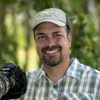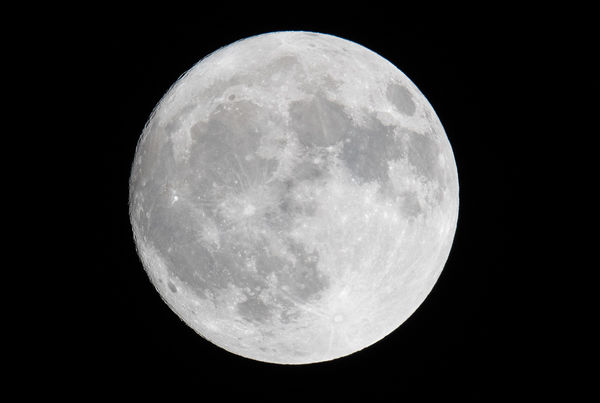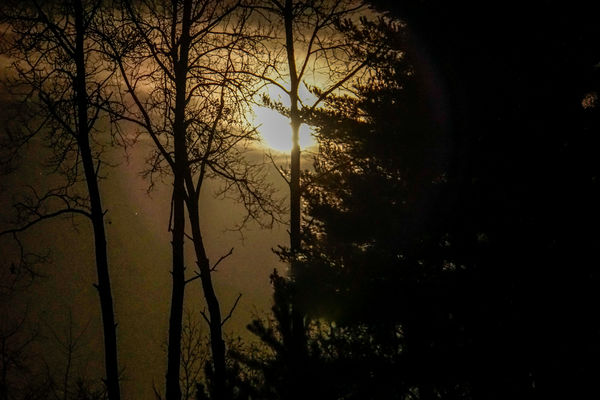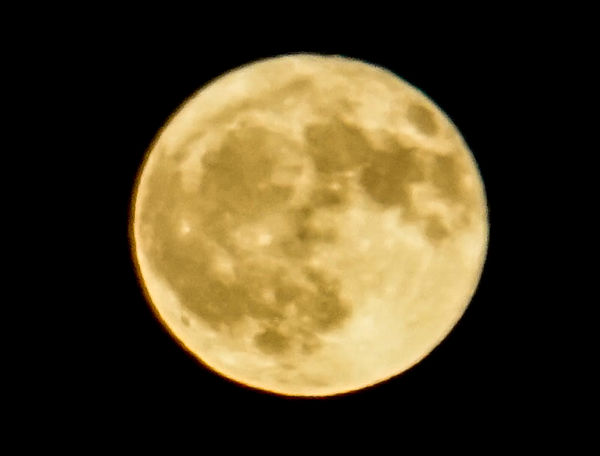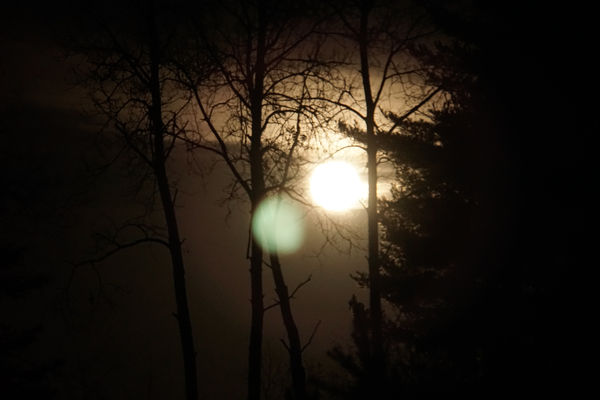Getting Successful Shots of the Moon
Oct 25, 2018 09:42:28 #
I used to believe that, but then I started to observe. The moon sometimes shines in the daytime as it sits adjacent to the sun; i.e., no sun shining on it. Who really knows what it is or how it works. I just know it is a fascinating thing to watch and track ...
Oct 25, 2018 09:46:30 #
Since the moon is reflecting sunlight similar to Earth's noon day sunlight, adjust your exposure to the settings you would use in bright sun.
Oct 25, 2018 09:54:17 #
Marlz wrote:
Umm, yeah, it is the sun's fault ...no sun shining on it. Who really knows what it is or how it works. I just know it is a fascinating thing to watch and track ...

https://www.livescience.com/45979-why-does-the-moon-shine.html
.
Oct 25, 2018 09:57:35 #
As a quick addendum to my previous post. If you do spot meter the moon and open up a stop, make sure you are spot metering on the white part, not the darker areas. For the darker / mixed areas + 1/3 ~ + 2/3rds is about right. This was shot with the D850, 600 F/4 + 1.4TC, cropped. I spot metered off the light area of the moon in the lower right, opened up 1 stop and this was the result. Super boring, but properly exposed LOL :)
Oct 25, 2018 10:00:57 #
Oct 25, 2018 10:02:14 #
Oct 25, 2018 10:05:52 #
larryepage
Loc: North Texas area
TriX wrote:
Not sure of your specific issue (please post a sho... (show quote)
I'll have to admit that I had not heard the Loony 11 Rule called by that name, but will say that I have found the principle to be valid, at least as a starting point. If you have ever opportunity to see lunar material at a NASA site or in a museum, you will note that it is usually medium to dark gray in appearance and may include some sparkly inclusions. We see the moon as much lighter than it actually is because our eyes are adapted to the generally dark night sky and because it is illuminated by 'unmodified' sunlight. It is also somewhat darker than it appears in photographs returned by astronauts who visited, because exposure in the images that we see by them was generally set to render them and their equipment properly, somewhat overexposing the lunar surface..
If you can find Ansel Adams's comments on his image "Moonrise, Hernandez, New Mexico," you will find that when he set up for that shot, he was unable to find his light meter, but remembered that the sunlight illuminating the moon was the same sunlight (within a small fraction of a percent) illuminating the earth. So he set up accordingly and used his last available film to record that image, capturing only a single exposure.
Since film generally had exposure latitude at the top end (the highlights), or could be adjusted in development to pull highlights down, Adams could afford to approximate a little when photographing a bright subject. The digital world is a little different. We have latitude at the low end and can fairly easily pull 4 or 5 stops of detail out of the shadows (especially if saving in raw), so we have to make some minor changes from the old approach.
Unless I am using a very long lens and capturing the moon over a big part of the frame, I have found that none of the metering modes (averaging, matrix, or spot) will provide proper information to any of the automatic exposure modes in the camera to render a good exposure. You will almost certainly have to put the camera in manual and set shutter speed and aperture yourself. The combinations provided here are good starting points, but best exposure changes as the moon rises in the sky and its light passes through less and less of our atmosphere. So you will need more exposure when the moon is low in the sky and less as it is higher. Also...photographing the full moon is like using an on-camera flash. The lighting ends up being very harsh and flat, and a lot of detail is washed out, no matter the exposure. Exposures captured a few nights before or after the night of the full moon will more easily render more interesting detail as the sun is less directly overhead the lunar surface as you see it. (And the setup for best exposure will change some too...you will need to adjust for slightly more exposure.)
Keep in mind that at large magnifications (which includes just about any zoom setting that will capture a meaningful image of the moon), it is going to be somewhere between difficult and impossible to hold the camera still enough to get a clear image. Either a tripod or (if you are lucky) a well-shaped fork in a branch of a sturdy tree will be mandatory.
Great shots of the moon are not impossibly difficult, but they are not "giveaways" either. Be patient and keep trying. The good news is that you can check immediately and see if you are getting close. In film photography you would have to wait to see if you were on the right track or not.
Oct 25, 2018 10:20:30 #
Oct 25, 2018 10:32:03 #
Marlz wrote:
And my max is 200 mm. :( With what I have to work with now ...
Then use 1/250th, F/5.6, ISO 100 - that'll get you this same exposure and serve as a good starting point. You may need to adjust a little depending on sky clarity.
Oct 25, 2018 11:32:59 #
Marlz wrote:
Thanks. Will post a pic or two as soon as possible. Last night was the last time I will be able to go for moon photography for awhile. Generally it is too cold here in northern Wisconsin (November - March) for me to have fingers that can manage my camera.
Also.... I believe the Sony A6000 May have a few settings that can help you once you nail the exposure.
Go to the mode settings, “SCN” then select “Hand-held Twilight” or “Night Scene”. I’ve had good results using these shooting modes.
Although these mode do not compensate for improper exposure.
Good luck.
Oct 25, 2018 12:05:15 #
Marlz wrote:
I used to believe that, but then I started to observe. The moon sometimes shines in the daytime as it sits adjacent to the sun; i.e., no sun shining on it. Who really knows what it is or how it works. I just know it is a fascinating thing to watch and track ...
But of course the sun is still shining on the moon even when both are visible in the sky at the same time.
Oct 25, 2018 12:11:31 #
Oct 25, 2018 17:43:41 #
jerryc41 wrote:
People here get fantastic moon shots. You will have an overload of good advice. If you post a couiple of your shots and click on (store original), people will be able to offer useful comments.



Oct 25, 2018 19:44:04 #
Oct 25, 2018 19:51:39 #
And several photos have reflections like this. Why is that? Love the help I receive here! Thank you!
If you want to reply, then register here. Registration is free and your account is created instantly, so you can post right away.


